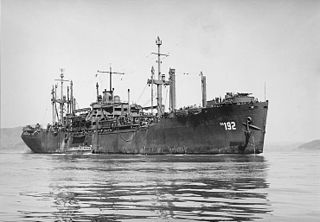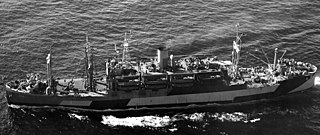Disembarkation or debarcation is the process of leaving a ship or aircraft, or removing goods from a ship or aircraft. (debark: from the French des meaning "from", and, barque, meaning "small ship"). [1] [2]
Disembarkation or debarcation is the process of leaving a ship or aircraft, or removing goods from a ship or aircraft. (debark: from the French des meaning "from", and, barque, meaning "small ship"). [1] [2]
The loading and unloading of cargo has traditionally been handled by stevedores, also known as longshoremen, wharfies, etc. Today, the vast majority of non-bulk cargo is transported in intermodal containers, [3] which are loaded and unloaded using specialized cranes. [4]
People normally board and depart a ship via a gangplank (gangway), a movable structure usually consisting of a ramp with stairs and railings. The gangplank may lead to either a dock or a small boat (or lighter) that connects to the shore. Accidents during disembarkation are most often due to being struck by a rope (line), railing or other items due to the ship's motion, or attempting to avoid such items. The second most common cause is slipping or tripping on the gangway. [5]
Military debarking procedures, even in non-combat zones, can be quite complex. [6] [7] In addition to routine operations, debarking can be conducted under fire as part of amphibious assaults, such as that of the Normandy landings during World War II. In such cases, it is vital that cargo be loaded so it can be unloaded in the order needed, rather than simply to maximize the use of space. This is called combat loading. Landing craft are used to transport both troops and cargo to the shore. [8]

Containerization is a system of intermodal freight transport using intermodal containers. Containerization, also referred as container stuffing or container loading, is the process of unitization of cargoes in exports. Containerization is the predominant form of unitization of export cargoes, as opposed to other systems such as the barge system or palletization. The containers have standardized dimensions. They can be loaded and unloaded, stacked, transported efficiently over long distances, and transferred from one mode of transport to another—container ships, rail transport flatcars, and semi-trailer trucks—without being opened. The handling system is completely mechanized so that all handling is done with cranes and special forklift trucks. All containers are numbered and tracked using computerized systems.

USS Talladega (APA/LPA-208) was a Haskell-class attack transport of the US Navy. She was of the VC2-S-AP5 Victory ship design type. Talladega was named for Talladega County, Alabama.

USS Almaack (AKA-10) was an Almaack class attack cargo ship named after Almaack, a star system in the constellation Andromeda. She served as a commissioned ship for 4 years and 11 months.

USS Haskell (APA-117) was the lead ship of her class of attack transports, built for the United States Navy during World War II. She was of the VC2-S-AP5 Victory ship design type. Haskell was named for the Haskell Counties of Kansas, Oklahoma, and Texas.

USS Arenac (APA-128) was a Haskell-class attack transport in service with the United States Navy from 1945 to 1946. She was scrapped in 1974.

USS Rutland (APA-192) was a Haskell-class attack transport built and used by the US Navy in World War II. She was a Victory ship design, VC2-S-AP5. She was named after Rutland County, Vermont, USA.

USS Anne Arundel (AP-76) was an American transport ship that was built in 1940 and scrapped in 1970. Originally laid down as the Mormacyork, she was later named after Anne Arundel County, Maryland. Annapolis is the county seat there, the state capital, and also the home of the Naval Academy. Anne Arundel earned five battle stars for her World War II service.

USS Pitkin County (LST-1082) was an LST-542-class tank landing ship built for the United States Navy during World War II. Named after Pitkin County, Colorado, she was the only U.S. Naval Vessel to bear the name.

USS Wharton (AP-7) was a troop transport in the service of the United States Navy during World War II. The ship was originally an Emergency Fleet Corporation Design 1029 type built for the United States Shipping Board. The ship was laid down as Manmasco but renamed and launched as Sea Girt then completed September 1921 as Southern Cross. The ship was first allocated by the United States Shipping Board to the Munson Steamship Line until purchased by the line in 1925. Munson operated the Southern Cross in the South American trade from 1921 until 1938 when the ship was sold at a Marshall's sale and taken over by the United States Maritime Commission which paid the full mortgage claim.

USS Bergen (APA-150) was a Haskell-class attack transport in service with the United States Navy from 1944 to 1946. She was scrapped in 1973.

USS Windsor (APA-55) was a Windsor-class attack transport in service with the United States Navy from 1943 to 1946. She was scrapped in 1972.

USS Tazewell (APA/LPA-209) was a Haskell-class attack transport in service with the United States Navy from 1944 to 1946. She was scrapped in 1973.

USS Wayne (APA-54) was a Sumter-class attack transport that served with the US Navy during World War II.

USS Sheridan (APA-51) was an Ormsby-class attack transport that served with the US Navy during World War II.

American Legion was built for the United States Shipping Board (USSB), one of the planned World War I troop transports converted before construction into passenger and cargo vessels, the Emergency Fleet Corporation Design 1029 ships. The ship was laid down as Koda and perhaps assigned the name Badger State at one point, but renamed American Legion before launch and one of only a few of the design not taking a state nickname. Originally operated by the USSB's agents and the Munson Steamship Line the ship saw commercial service until laid up 13 March 1939.

USS Harris (APA-2) was an Emergency Fleet Corporation Design 1029 ship launched for the United States Shipping Board (USSB) on 19 March 1921 by Bethlehem Shipbuilding Corporation, at Sparrows Point, Maryland as Pine Tree State. After operation by commercial lines for the USSB, during which the ship was renamed President Grant and operated commercially until laid up in the late 1930s.

USS J. Franklin Bell (APA-16) was a Harris-class attack transport ship. She was built in 1921 and spent 20 years in merchant service as a passenger and cargo liner. She was acquired for the United States Army in 1940 and transferred to the United States Navy shortly after the USA entered the Second World War. She served throughout and after the Pacific War, was decommissioned in 1946 and scrapped in 1948.
USS Thurston (AP-77) was a troop transport that served with the United States Navy during World War II. She was named after counties in Nebraska and Washington.

In shipping, break-bulk, breakbulk, or break bulk cargo, also called general cargo, is goods that are stowed on board ship in individually counted units. Traditionally, the large numbers of items are recorded on distinct bills of lading that list them by different commodities. This is in contrast to cargo stowed in modern intermodal containers as well as bulk cargo, which goes directly, unpackaged and in large quantities, into a ship's hold(s), measured by volume or weight.

Hampton Roads Port of Embarkation was the Army command structure and distributed port infrastructure in the Hampton Roads area of Virginia supporting the movement of personnel and cargo overseas. It had been activated as the Newport News Port of Embarkation in World War I, deactivated, then reactivated on 15 June 1942.